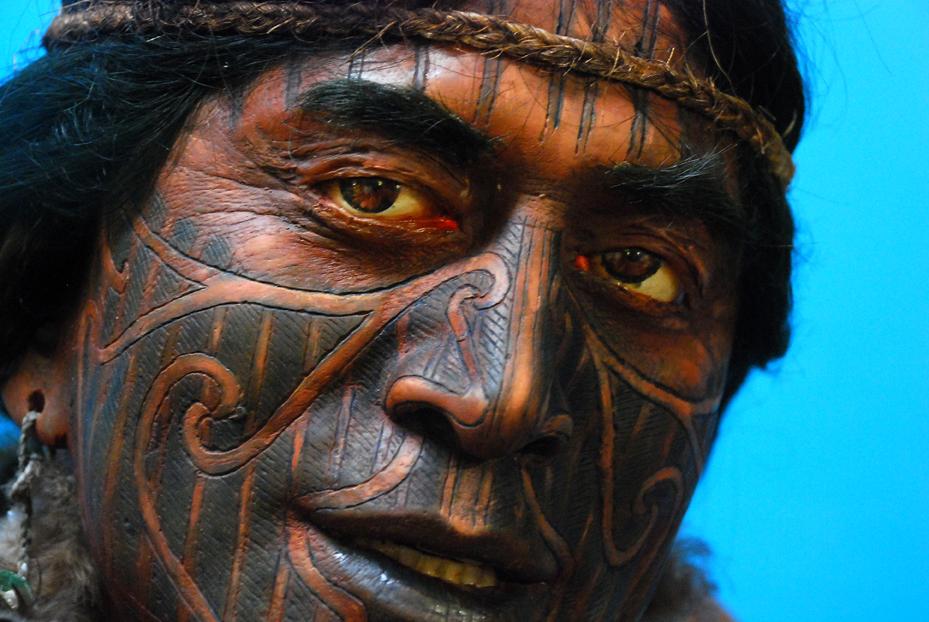The Maori

The Maori are the indigenous people of New Zealand, the country they call Aotearoa. Their ancestors arrived in New Zealand on canoes from Pacific islands about 1200 AD. Today they comprise about 15 percent of the country's population. Te Reo Maori is their native language and one of the official languages in New Zealand: "Kia ora"(hello), "Haere mai"(welcome).
The Maori settled on the coast and lived in small tribal groups. They lived off the sea and the land and developed a unique culture with their own language, a rich mythology and distinctive crafts. Maori was a warrior culture and tribal wars were common.
The first Europeans arrived in New Zealand in the early 1800s bringing changes to the Maori way of life. However, initial relations were friendly. In 1840, the Treaty of Waitangi was signed by representatives of Britain's Queen Victoria and various Maori chiefs. In this way, New Zealand became part of the British Empire. The treaty established British law and government. However, it could not prevent warfare as the Maori defended their lands and local authority. After the wars the Maori lost land through confiscation and sale, mostly to British settlers. To many Maori people today, the most significant issue in New Zealand remains that of land. Still the Maori are probably the indigenous people who have survived the European settlement best.
Watch this excerpt from Dances of Life on YouTube. What do you get to know about Maori identity and culture?
Before the coming of the Pakeha (white man) to New Zealand, all literature in Maori was passed on orally to succeeding generations. This included many legends and songs. The most recognized tradition today is the "haka" which is a war dance. Hakas are chanted Maori poems accompanied by expressive movements and are used for greetings and to challenge and intimidate enemies before battle. The haka (Ka Mate) has been immortalized by New Zealand's Rugby Team, the All Blacks, who have performed this dance before every game since 1905. Today, the haka is an object of pride in New Zealand – shared well beyond the Maori community.
Watch the All Blacks' haka on YouTube. How would you describe this pre-match haka? Do you think it is a suitable way for the All Blacks to start a rugby match?

Many Maori cultural practices are kept alive in contemporary New Zealand. You might be familiar with the hongi, i.e. a greeting where noses are pressed together. You might also have noticed their use of tattoos, or ta moko, to decorate their bodies. Ta moko is a core component of Maori culture and an outward expression of commitment and respect. It is customary for men to wear moko on their faces, buttocks, thighs and arms, whereas women usually wear a moko on the chin and lips.
Maori culture has had a strong revival in the last century and their traditions have become a more integrated part of New Zealand society. The Maori language has been one of the official languages of New Zealand since 1985 and you might be suprised to see that many places have Maori names.
The Maori have played a role in the governing of New Zealand since the mid-19th century, when Maori members first entered Parliament. Seven seats out of a total of 120 are reserved for Maori in the New Zealand Parliament.
In the 2006 census, there were an estimated 620,000 Maori in New Zealand, making up roughly 15% of the national population.
Today, Maoris are active in all spheres of New Zealand society, though as with the Native Americans and Australian Aborigines a significant proportion of the population have economic and social problems.
Comprehension
- Where do the Maori come from?
- What do they call New Zealand?
- When did Europeans arrive?
- What is the Treaty of Waitangi?
- What is typcal of Maori culture?
- Explain what the haka is.
- What can be said about the Maori today?
- Explain what the Maori have in common with other indigenous people.
Make a Presentation
The Rotorua Area in the North Island was originally settled by the Maoris. Today the city thrives on tourism. Make a brochure or a blogpost presenting the Maori living in Rotorua or Te Rotorua-nui-a-Kahumatamomoe as it is called in Maori. You will find relevant resources on Britannica online and Wikipedia.
Guoskevaš sisdoallu
Learn how to pronounce a number of Maori words and phrases.